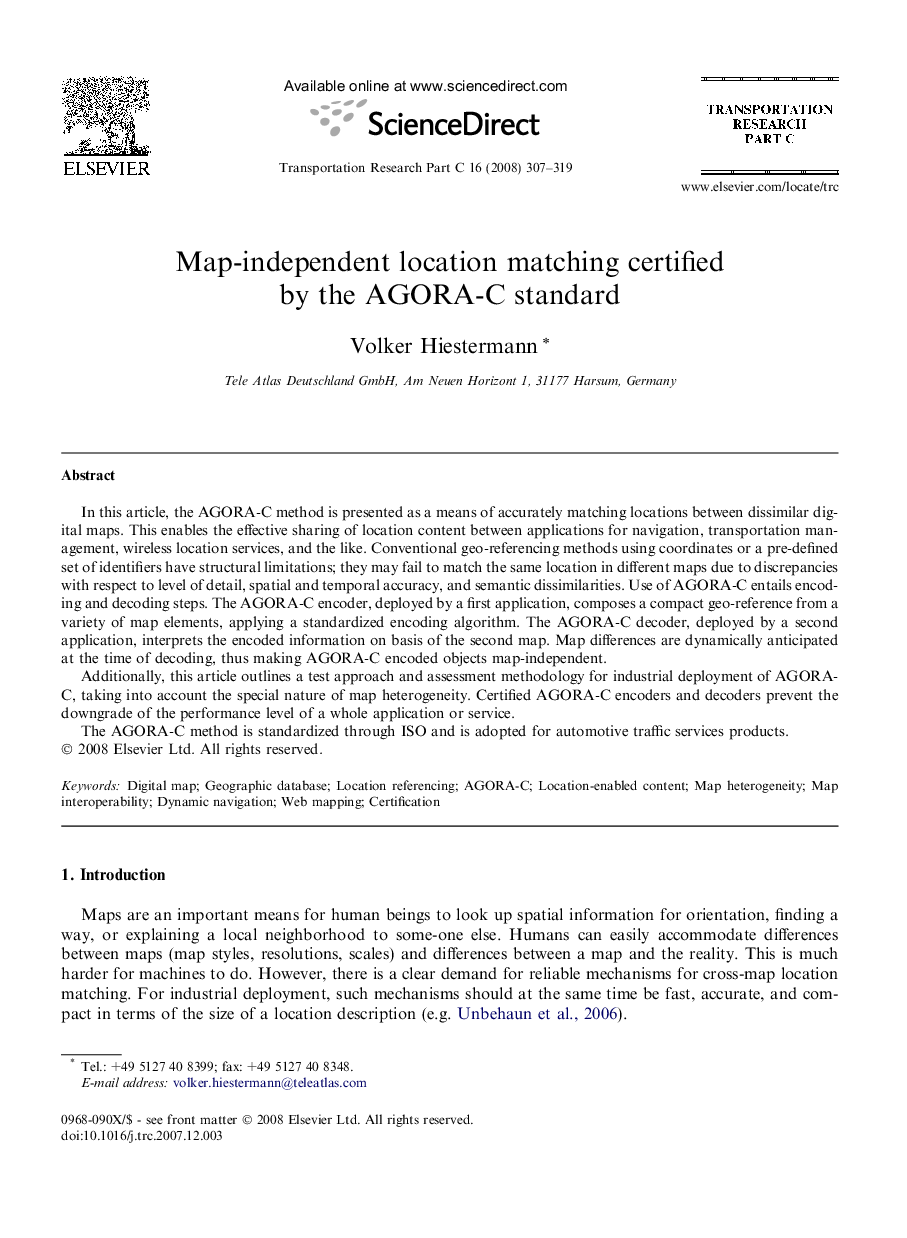| Article ID | Journal | Published Year | Pages | File Type |
|---|---|---|---|---|
| 525407 | Transportation Research Part C: Emerging Technologies | 2008 | 13 Pages |
In this article, the AGORA-C method is presented as a means of accurately matching locations between dissimilar digital maps. This enables the effective sharing of location content between applications for navigation, transportation management, wireless location services, and the like. Conventional geo-referencing methods using coordinates or a pre-defined set of identifiers have structural limitations; they may fail to match the same location in different maps due to discrepancies with respect to level of detail, spatial and temporal accuracy, and semantic dissimilarities. Use of AGORA-C entails encoding and decoding steps. The AGORA-C encoder, deployed by a first application, composes a compact geo-reference from a variety of map elements, applying a standardized encoding algorithm. The AGORA-C decoder, deployed by a second application, interprets the encoded information on basis of the second map. Map differences are dynamically anticipated at the time of decoding, thus making AGORA-C encoded objects map-independent.Additionally, this article outlines a test approach and assessment methodology for industrial deployment of AGORA-C, taking into account the special nature of map heterogeneity. Certified AGORA-C encoders and decoders prevent the downgrade of the performance level of a whole application or service.The AGORA-C method is standardized through ISO and is adopted for automotive traffic services products.
